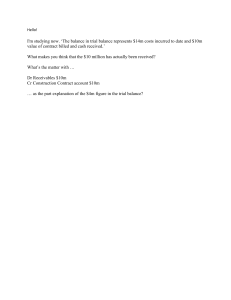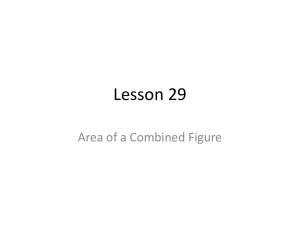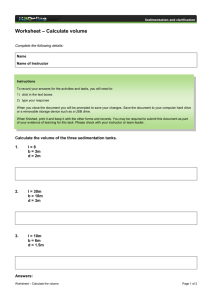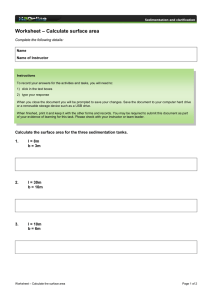cse-v-formal-languages-and-automata-theory-10cs56-question-paper
advertisement
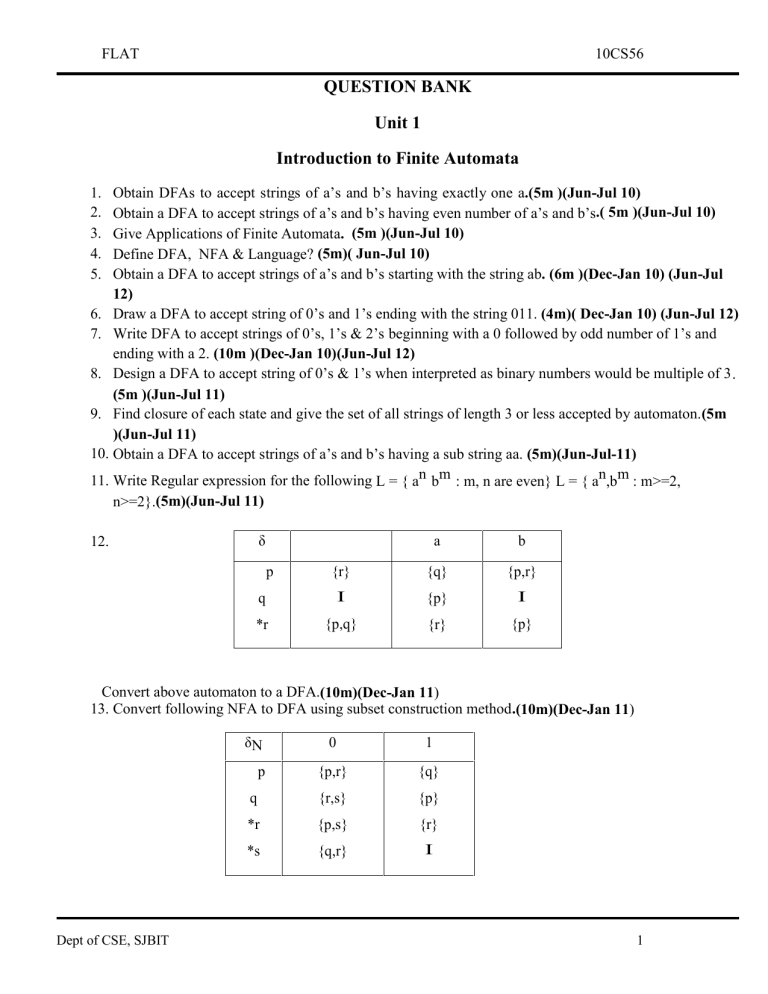
FLAT
10CS56
QUESTION BANK
Unit 1
Introduction to Finite Automata
1.
2.
3.
4.
5.
Obtain DFAs to accept strings of a’s and b’s having exactly one a.(5m )(Jun-Jul 10)
Obtain a DFA to accept strings of a’s and b’s having even number of a’s and b’s.( 5m )(Jun-Jul 10)
Give Applications of Finite Automata. (5m )(Jun-Jul 10)
Define DFA, NFA & Language? (5m)( Jun-Jul 10)
Obtain a DFA to accept strings of a’s and b’s starting with the string ab. (6m )(Dec-Jan 10) (Jun-Jul
12)
6. Draw a DFA to accept string of 0’s and 1’s ending with the string 011. (4m)( Dec-Jan 10) (Jun-Jul 12)
7. Write DFA to accept strings of 0’s, 1’s & 2’s beginning with a 0 followed by odd number of 1’s and
ending with a 2. (10m )(Dec-Jan 10)(Jun-Jul 12)
8. Design a DFA to accept string of 0’s & 1’s when interpreted as binary numbers would be multiple of 3.
(5m )(Jun-Jul 11)
9. Find closure of each state and give the set of all strings of length 3 or less accepted by automaton.(5m
)(Jun-Jul 11)
10. Obtain a DFA to accept strings of a’s and b’s having a sub string aa. (5m)(Jun-Jul-11)
11. Write Regular expression for the following L = { an bm : m, n are even} L = { an,bm : m>=2,
n>=2}.(5m)(Jun-Jul 11)
δ
12.
a
b
p
{r}
{q}
{p,r}
q
I
{p}
I
*r
{p,q}
{r}
{p}
Convert above automaton to a DFA.(10m)(Dec-Jan 11)
13. Convert following NFA to DFA using subset construction method.(10m)(Dec-Jan 11)
Dept of CSE, SJBIT
δN
0
1
p
{p,r}
{q}
q
{r,s}
{p}
*r
{p,s}
{r}
*s
{q,r}
I
1
FLAT
10CS56
14. Convert the following DFA to Regular Expression (10m)(Dec –Jan-12)
15. Define NFA. With example explain the extended transition function(5m)(Dec –Jan-12)
16. Explain the ground rules of finite automata.(5m)(Dec-Jan12)
Dept of CSE, SJBIT
2
FLAT
10CS56
UNIT 2
Finite Automata, Regular Expressions
1. P.T. Let R be a regular expression. Then there exists a finite automaton M = (Q,¦, G, q0, A) which
accepts L(R). (10m)( June- july 2010)
2. Define derivation , types of derivation , Derivation tree & ambiguous grammar. Give example for
each. (4m)(June- July 2010)
3. Obtain
an
NFA
to
accept
the
following
language
L
=
{w
|
w
n
n
abab or aba where n t 0} (6m)(June- July- 2010)
4. Convert the following NFA into an equivalent DFA. (10m)( Dec- Jan 2010) (Jun-Jul 12)
5. Convert the following NFA to its equivalent DFA(10m)( Dec- Jan 2011) (Jun-Jul 12)
6. Obtain an NFA which accepts strings of a’s and b’s starting with the string ab. ). (7m)( June- july 2011)
7. Define grammar? Explain Chomsky Hierarchy? Give an example (6m)(June- July 2011)
8. Is the following grammar ambiguous (7m)(June- July 2011) (Jun-Jul12)
S -> aB | bA
A -> aS | bAA |a
Dept of CSE, SJBIT
3
FLAT
10CS56
B -> bS | aBB | b
9. Obtain grammar to generate string consisting of any number of a’s and b’s with at least
one b. ( 5m)(Dec- Jan 2011)
10. Obtain a grammar to generate the following language L ={WWR Where W {a, b}*}.
( 5m)(Dec- Jan 2011)
11. Obtain a grammar to generate the following language: L = { 0m 1m2n | m>= 1 and
n>=0}. (5m)( Dec- Jan 2011) (Jun-Jul12)
12. Obtain a grammar to generate the following language: ( 5m)(Dec- Jan 2011)
L = { w | n a(w) > n b(w) }
L = { an bm ck | n+2m = k for n>=0, m>=0}
13. Define PDA. Obtain PDA to accept the language L = {an bn | n>=1} by a final state.
(5m)( Dec- Jan 2011)
14. Write a short note on application of context free grammar. ( 7m)(Dec- Jan 2012)
15. Explain finite automata with epsilon transition. (7m)(Dec-Jan 12)
16. Explain the application of regular expression (6m)(Dec-Jan 12)
Dept of CSE, SJBIT
4
FLAT
10CS56
Unit 3
Regular Languages, Properties of Regular Languages
1. Prove pumping lemma? (4m)( June-July 2010)
2. Prove that L={w|w is a palindrome on {a,b}*} is not regular. i.e., L={aabaa, aba,
abbbba,…} ( 8m)(June-July 2010)
3. Prove that L={ all strings of 1’s whose length is prime} is not regular. i.e., L={12,13 ,15 ,17
,111 ,----} (8m)(June-July 2010)
4. Let M = (Q, ¦, G, q0, A) be an FA recognizing the language L. Then there exists an
equivalent regular expression R for the regular language L such that L = L(R). (8m)(
Dec- Jan 2010)
5. What is the language accepted by the following FA. ( 6m)(Dec-Jan 2010)
6. Write short note on Applications of Regular Expressions ( 6m)(Dec-Jan 2010)
7. Show that following languages are not regular (10m)(June-July 2011) (Jun-Jul12)
L={anbm | n, m t0 and n<m }
L={anbm | n, m t0 and n>m }
L={anbmcmdn | n, m t1 }
L={an | n is a perfect square }L={an | n is a perfect cube }
8. Apply pumping lemma to following languages and understand why we cannot complete
proof (10m)(June-July 2011)
L={anaba| n t0 }
L={anbm | n, mt0 }
9. Obtain a DFA to accept strings of a’s and b’s starting with the string ab (10m)( Dec-Jan
2011)
10. Obtain a regular expression for the FA shown below: (10m)( Dec-Jan 2011) (Jun-Jul12)
Dept of CSE, SJBIT
5
FLAT
11.
Solve: (10m)(Dec-Jan12)
12.
Explain Closure properties with an example. (10m)(Dec-Jan12)
Dept of CSE, SJBIT
10CS56
6
FLAT
10CS56
UNIT 4
Context-Free Grammars And Languages
1. P.T. If L and M are regular languages, then so is LM. (10m)June-July 2010)
2. Write a DFA to accept the intersection of L1=(a+b)*a and L2=(a+b)*b that is for L1 ˆL2.
( 10m)(June-July 2010) (Jun-Jul12)
3. Find the DFA to accept the intersection of L1=(a+b)*ab (a+b)* and L2=(a+b)*ba (a+b)* and that
is for L1 ˆ L2 (10m)( Dec-Jan 2010)
4. P.T. If L and M are regular languages, then so is L – M. ( 10m)(Dec-Jan 2010)
5. Design context-free grammar for the following cases (10m)(June-July 2011)
L={ 0n1n | n≥l }
L={aibjck| i≠j or j≠k}
6. Generate grammar for RE 0*1(0+1)* (10m)(June-July 2011)
7. P.T. If L is a regular language over alphabet S, then L = 6* - L is also a regular language.
( 8m)(Dec-Jan 2011) (Jun-Jul12)
8. P.T. - If L is a regular language over alphabet 6, then, L = 6* - L is also a regular
language. ( 8m)(Dec-Jan 2011)
9. P.T. If L is a regular language, so is LR ( 6m)(Dec-Jan 2011)
10. . If L is a regular language over alphabet 6, and h is a homomorphism on 6, then h (L) is
also regular. ( 10m)(Dec-Jan 2012).
11. Explain CGF with an example. . ( 5m)(Dec-Jan 2012)
12. Explain decision properties of regular language. . ( 5m)(Dec-Jan 2012)
Dept of CSE, SJBIT
7
FLAT
10CS56
UNIT 5
Pushdown Automata
1. . Give leftmost and rightmost derivations of the following strings
a) 00101 b) 1001
c) 00011
(4m)(June-July 2010)
2. Construct PDA: For the language (4m)(June-July2010) (Jun-Jul12)
3. Construct DPDA which accepts the language L = {wcwR | w {a, b}*, c Σ}.
(4m)(June-July 2010) (Jun-Jul12)
4. Construct DPDA for the following: (8m)(June-July 2010)
Accepting the language of balanced parentheses. (Consider any type of parentheses)
Accepting strings with number of a’s is more than number of b’s
Accepting {0n1m| n t m}
5. Design nPDA to accept the language: ( 10m)(Dec-Jan 2010) (Jun-Jul12)
{aibjck | i, j, k t 0 and i = j or i = k}
{aibjci+j | i, j t 0}
6.
7.
8.
9.
{aibi+jcj | i t 0, j t 1}
Construct PDA: For the language L = {anb2n | a, b
Σ, n t 0}( 5m)(Dec-Jan 2010)
Construct PDA to accept if-else of a C program and convert it to CFG. (This does not
accept if –if –else-else statements) ( 5m)(Dec-Jan 2010)
Show that deviation for the string aab is ambiguous. (5m)(June-July 2011)
Suppose h is the homomorphism from the alphabet {0,1,2} to the alphabet { a,b}
defined by h(0) = a; h(1) = ab & h(2) = ba
a) What is h(0120) ?
b) What is h(21120) ?
c) If L is the language L(01*2), what is h(L) ?
d) If L is the language L(0+12), what is h(L) ?
If L is the language L(a(ba)*) , what is h-1(L) ? (5m)(June-July 2011)
10. Design a PDA to accept the set of all strings of 0’s and 1’s such that no prefix has
more 1’s than 0’s. (5m)(June-July2011)
11. Construct PDA: Accepting the set of all strings over {a, b} with equal number of a’s
and b’s. Show the moves for abbaba. (5m)(June-July2011)
12. Construct PDA: Accepting the language of balanced parentheses, (consider any type
of parentheses). ( 5m)(Dec-Jan 2011)
Dept of CSE, SJBIT
8
FLAT
10CS56
13. Construct PDA to accept by final state the language of all strings of 0’s and 1’s such
that number of 1’s is less than number of 0’s. Also convert the PDA to accept by
empty stack. (5m)( Dec-Jan 2011)
14. How do you convert From PDA to CFG. ( 5m)(Dec-Jan 2011)
15. Convert PDA to CFG. PDA is given by P = ({p,q}, {0,1}, {X,Z}, δ, q, Z)),
Transition function δ is defined by ( 5m)(Dec-Jan 2011)
δ(q, 1, Z) = {(q, XZ)}
δ(q, 1, X) = {(q, XX)}
δ(q, H, X) = {(q, H)}
δ(q, 0, X) = {(p, X)}
δ(p, 1, X) = {(p, H)}
16. Convert to PDA, CFG with productions ( 10m)(Dec-Jan 2012)
A o aAA, A -> aS | bS | a
S -> SS | (S) | H
S -> aAS | bAB | aB,
A -> bBB | aS | a,
B -> bA | a
17. Explain push down automata with an example( 10m)(Dec-Jan 2012)
Dept of CSE, SJBIT
9
FLAT
10CS56
UNIT 6
Properties of Context-Free Languages
1. Eliminate the n->n-generating symb->ls fr->m S -> aS | A | C, A ->a, B -> aa, C > aCb. (8m)(June-July 2010)
2. Draw the dependency graph as given above. A is non-reachable from S. After
eliminating A, G1= ({S}, {a}, {S -> a}, S). (6m)(June-July 2010)
3. Find out the grammar without H – Productions G = ({S, A, B, D}, {a}, {S o aS |
AB, A -> H, B-> H, D ->b}, S). (6m)(June-July 2010)
4. Eliminate n->n-reachable symbols from G= ({S, A}, {a}, {S -> a, A ->a}, S)
(10m)(Dec-Jan 10) (Jun-Jul12)
5. Eliminate non-reachable symbols from S -> aS | A, A -> a, B -> aa. (10m)(DecJan 10)
6. Eliminate useless symbols from the grammar with productions S -> AB | CA, B >BC | AB, A ->a, C -> AB | b. (5m)(June-July 2011)
7. Eliminate useless symbols from the grammar (5m)(June-July 2011)
P= {S o aAa, A ->Sb | bCC, C ->abb, E -> aC}
P= {S -> aBa | BC, A -> aC | BCC, C ->a, B -> bcc, D -> E, E ->d}
P= {S -> aAa, A -> bBB, B -> ab, C -> aB}
P= {S -> aS | AB, A -> bA, B -> AA}.
8. Write Algorithm to find nullable variables. (5m)(June-July 2011)
9. Eliminate H - productions from the grammar. (5m)(June-July 2011)
S -> a |Xb | aYa, X -> Y| H, Y -> b | X
S -> Xa, X -> aX | bX | H
S -> XY, X ->Zb, Y -> bW, Z ->AB, W ->Z, A -> aA | bB | H, B -> Ba | Bb| H
S -> ASB | H, A -> aAS | a, B -> SbS | A| bb
10. Eliminate H - pr->ductions and useless symbols from the grammar S ->a |aA|B|C,
A ->aB| H, B ->aA, C ->aCD, D ->dd. (10m)(Dec-Jan-2011) (Jun-Jul12)
11. Show that L = {aibici | i t1} is not CFL. (10m)(Dec-Jan 2011)
12. Show that L = {ww |w {0, 1}*} is not CFL. (10m)( Dec-Jan 2012)
13. Using pumping lemma for CFL prove that below languages are not context free
{p | p is a prime}. . ( 10m)(Dec-Jan 2012)
Dept of CSE, SJBIT
10
FLAT
10CS56
UNIT 7
Introduction To Turing Machine
1. Explain with example problems that Computers cannot solve.(6m)( JuneJuly2010)
2. Explain briefly the following Halting problem. . ( 4m)(June-July2010)
3. Explain Programming techniques for Turning Machines( 10m)(Dec-Jan-2010)
4. Design a Turing machine to accept a Palindrome. ( 10m)(Dec-Jan-2011)
5. Design a TM to recognize a string of the form anb2n. ( 10m)(June-July2010)
6. Design a Turing machine to accept a Palindrome. ( 10m)(Dec-Jan-2012) (JunJul12)
7. Define undesirability, decidability. (10m)( June-July 2011) (Jun-Jul12)
8. Post’s Correspondence problem Design a TM to recognize a string of 0s and 1s
such that the number of 0s is not twice as that of 1s. ( 10m)(Dec-Jan 2012)
UNIT 8
Undecidability
1. Design a TM to recognize a string of the form anb2n. ( 10m)(June-July2010)
2. P.t If L is a recursive language, L is also recursive. ( 10m)( June-July2010)
3. Design a Turing Machine to recognize 0n1n2n. (10m)( Dec-Jan 2010) (Jun-Jul12)
4. Explain briefly the following Halting problem(6m)( Dec-Jan 2010)
5. Define undesirability, decidability. (8m)( June-July 2011)
6. Post’s Correspondence problem Design a TM to recognize a string of 0s and 1s
such that the number of 0s is not twice as that of 1s. (10m)( Dec-Jan 2012) (JunJul12)
7. Design a Turing machine to accept a Palindrome. ( 7m)(Dec-Jan-2011)
8. Write a short note on: (20m) Dec-Jan 2012)
a. Undesirability,
Dept of CSE, SJBIT
11
FLAT
10CS56
b. Halting problem,
c. decidability.
Dept of CSE, SJBIT
12
